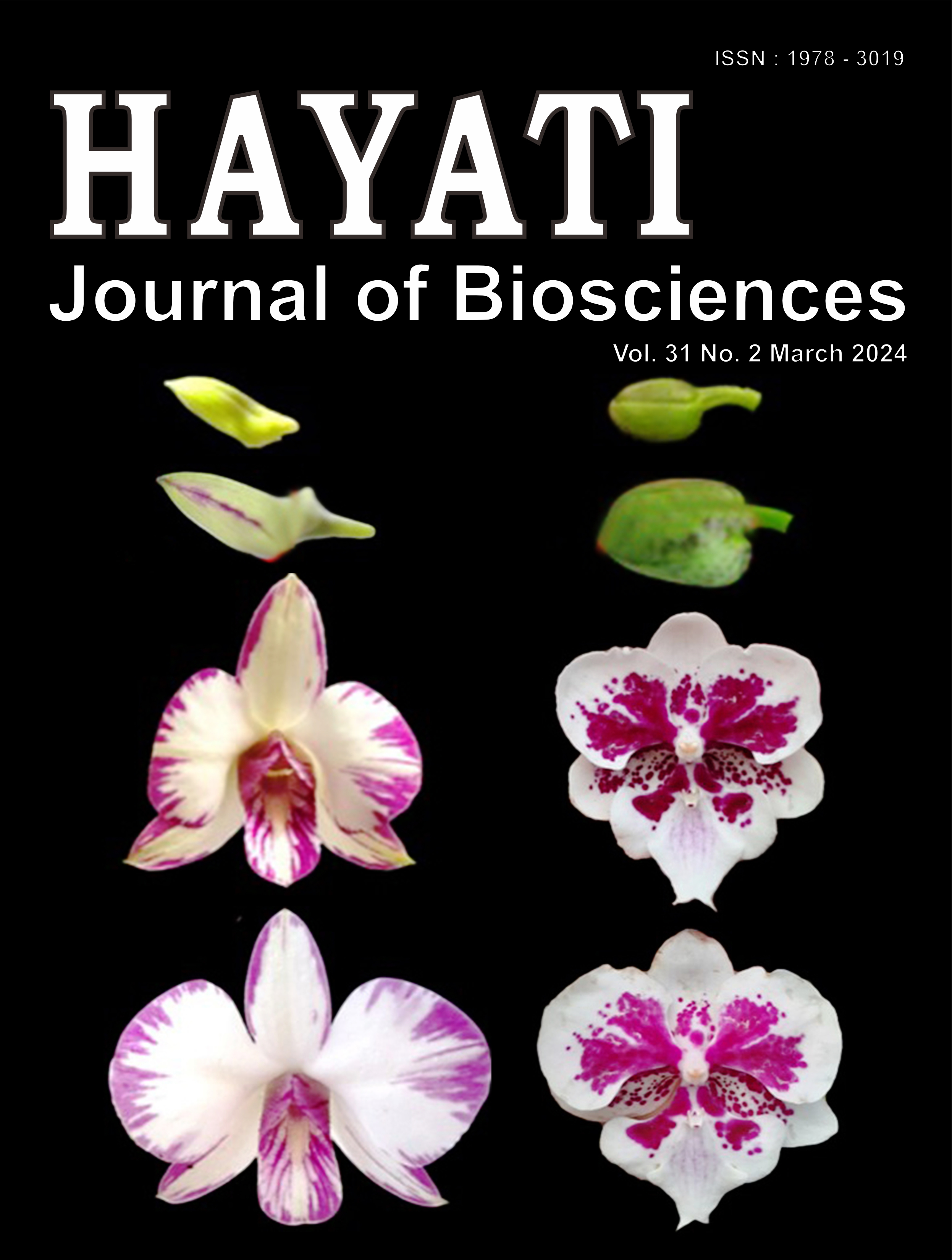Cloning and Extracellular Expression of Glargine in Pichia pastoris
Abstract
Patients with diabetes mellitus increase significantly every year. The increasing number of people with diabetes mellitus results in increased insulin requirements. There are two types of insulin used for diabetes mellitus treatment: human insulin and insulin analogues. Escherichia coli, Pichia pastoris, Saccharomyces cerevisiae, or Hansenula polymorpaha has been used to produce human insulin and insulin analogues. Pichia pastoris can produce glargine in large quantities, and the insulin protein produced will be secreted outside the cell to facilitate the purification process. The advantage of glargine has a long working time of up to 24 hours. Hence, glargine is more effective because patients with diabetes receive glargine injections only once daily. The research started with cloning the glargine gene, transforming pPICZαA-G plasmid into Pichia pastoris, and testing glargine production. 20 recombinant Pichia pastoris colonies were selected and regenerated. Eight recombinant Pichia pastoris colonies were tested for glargine production, and six colonies were detected producing glargine by electrophoresis SDS-PAGE gel stained with Coomassie blue. This study aims to produce glargine using Pichia pastoris as an expression system capable of producing glargine extracellularly, thus simplifying the purification process.
Downloads
Copyright (c) 2023 Dudi Hardianto, Efrida Martius, Tina Rostinawati, Anna Safarrida, Juwartina Ida Royani, Fahroziah Assyifa, Dihan Laziba

This work is licensed under a Creative Commons Attribution-NonCommercial 4.0 International License.
HAYATI J Biosci is an open access journal and the article's license is CC-BY-NC. This license lets others distribute, remix, tweak, and build upon author's work, as long as they credit the original creation. Authors retain copyright and grant the journal/publisher non exclusive publishing rights with the work simultaneously licensed under a https://creativecommons.org/

























.png) IPB University
IPB University Department of Biology
Department of Biology The Indonesian Biological Society
The Indonesian Biological Society 

